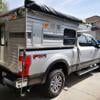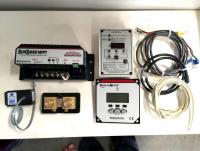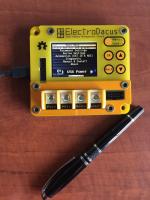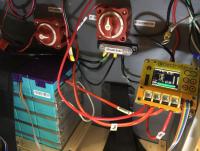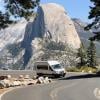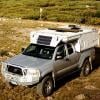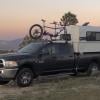I realize the majority of the members here would not normally go down this path, but I though it might be helpful if anyone ever wanted to venture out in the world of Lithium batteries, my experience might help. I've always been a geek and love playing with this stuff. This camper just gives me an excuse to spend money on my electronics/ham radio hobby.
I started out last year by replacing my two 75AH AGM batteries with a 100AH LiFePo battery. So you might ask, how can a 100AH lithium battery replace 150AH AGM (2x75AH) battery? A lead acid/AGM battery cannot tolerate a discharge any more than 50%, so the effective energy from a 150ah AGM is really 75ah. A lithium can easily handle a discharge down to 10% for a net energy availability of 90ah. My primary goal was to reduce the weight of the 2 AGMs with a 26# lithium battery.
At the time, I had a Morningstar Sunsaver MPPT controller and needed to figure out how I could adapt this lead acid charger to lithium charge profile. Lithium's do not need a float or equalization charge cycle. They essentially just charge to it's top voltage (14.2v) then stops until the charger measures/senses a drop in voltage to restart sending current to the battery. Lithiums, also require cell balancing, which is usually done via external device. At the time, I also became aware of a Kickstarter project by Dacian Toea, who created a charge controller and battery management system into a nice small package. He was creating this primarily for a household system, but it was equally deployable for a small camper/RV.
So, I got interested and he was embarking on creating a version 2 of his Solar Battery Management System (SBMS). I decided to wait for his new version and I found a way to program the Morningstar to mimic a lithium controller by changing the the charge parameters via a pc cable and program available on the Morningstar website.
Dacian took about a year to complete his Kickstarter and I just received his SBMS60 battery charger and management system. With the SBMS60, I am able to replace all this:
with this:
So, battery system now looks like this:
Another nice touch is the SBMS60 is able to connect via wifi to monitor the status of the battery and solar panels.
I hope this maybe of interest to someone. If I can be of assistance, just pm me and I'll do what I can to help. Cheers!
p.s. I guess I'll try and sell my old gear on the sell/exchange forum.
Edited by photohc, 08 April 2016 - 07:52 AM.


